

In 2015, the Innovative Vector Control Consortium (IVCC) issued a call for proposals and identified Attractive Targeted Sugar Baits (ATSB®) as a possible tool to help address outdoor transmission of malaria. A Proof-of-Concept trial (POC) was conducted in Mali in 2016/17.
Innovation in vector control is urgently needed to support the fight against malaria, particularly because of the growing threat of insecticide, and in particular pyrethtroid, resistance. ATSBs can plug an important gap as they will help address the growing threat of outdoor transmission of malaria.
ATSB is a device that presents an attractive sugar-meal laced with a lethal toxicant to mosquitoes and other flying, biting insects. The novel device leverages the natural sugar feeding behaviour of both male and female mosquitoes and is aimed at addressing the increased threat of outdoor malaria transmission. It offers insecticide to mosquitoes through a mechanism other than contact, opening up wider choice of insecticides and potential for resistance management. Modelling suggests that even a modest daily feeding/kill rate of 2-3% would translate in a substantial decrease in transmission of malaria burden (at least a minimum of 30% reduction in malaria incidence).
The ATSB developed by Israel based Westham is based on a natural sugar bait matrix including an insecticide, packaged in a bait station covered by a membrane allowing mosquitoes to feed through (see picture on the left)
ATSBs offer a new and potentially widely applicable control method to reduce malaria transmission, including outdoor bait stations attached to the exterior walls of home (2-3 per property), with easier implementation than for example, indoor residual spraying, where the contents of the house have to be removed prior to spraying the house.
The successful proof of concept studies supported by IVCC in Mali in 2016-2017 established the potential of ATSB (from Westham) as a new vector control product class. Results are published here: https://malariajournal.biomedcentral.com/articles/10.1186/s12936-020-3132-0
Since then, BMGF and IVCC have supported Westham to finalize the product design and optimize manufacturing to enable product evaluation at scale. Entomological evaluations are ongoing in Kenya, Mali, and Zambia, as well as baseline studies and cohort recruitment. Three epidemiology trials are planned to start in 2021/2022 in Zambia, Kenya and Mali to establish the public health value of this new intervention.
The demonstration (and modelling data, an example of which is given above) of ATSB public health value will open a wide field for product development for future generations of ATSB-type interventions.
- The identification of alternative insecticides (solo or in mixture) will facilitate Insecticide Resistance Management
- The optimization of the delivery mechanism (i.e., the bait station) has the potential to reduce cost and/or increase durability
- The testing of alternative deployment strategies is possible, potentially targeting other disease vectors, urban use and wider geographical extension (i.e., outside of Sub-Saharan Africa)
ATSB's have significant potential if they can be developed, procured and implemented cost-effectively. ATSBs plug an important gap in the market for outdoor malaria transmission and present a lot of opportunity for innovation in a completely new market space.
IVCC and partners are expecting to launch three epidemiological trials in 2021/2022 assuming COVID 19 outbreaks do not delay the project. If everything remains on schedule, it is expected that a dossier will be submitted to WHO-PQ by 2023 or early to mid-2024 with a deployment across sub-Saharan Africa from 2025 onwards.
Westham established the first industrial production line in June 2021. This will facilitate the rapid and scaled deployment of ASTBs once PQ listing of the product has been achieved. Discussions are starting with the donor community to anticipate the introduction of a new vector control intervention. Entomological studies are currently being conducted in Kenya, Mali and Zambia
The Swiss Development Cooperation (SDC), UK Aid and The Bill & Melinda Gates Foundation are the current funders of the project. Additional funders are expected to be introduced to support scale-up and roll-out post launch.
Other key Partners
Westham (industrial partner)
Path (project oversight and product evaluation in Zambia) with the support of Tulane University, Johns Hopkins University and Macha Research Trust.
URCR (product evaluation in Mali) with the support of LSHTM and the University of Miami.
LSTM (product evaluation in Kenya) with the support of KEMRI and US CDC.
Chris LarkinDirector, Communications and Operations, IVCC
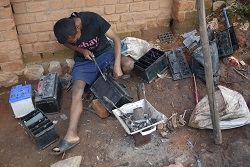 When we consider worldwide pollution — particulate matter in the air; contaminated water; persistent organic pesticides; toxic heavy metals like mercury, lead, chromium; the panoply of chemical wastes and endocrine disrupters — the problems seem insurmountable and intractable. Truly, they are not.
When we consider worldwide pollution — particulate matter in the air; contaminated water; persistent organic pesticides; toxic heavy metals like mercury, lead, chromium; the panoply of chemical wastes and endocrine disrupters — the problems seem insurmountable and intractable. Truly, they are not.
We have the knowledge and the skills to tackle toxic pollution and restore communities to healthier living conditions. At the Global Alliance on Health and Pollution (GAHP), we have developed a very specific tool to put that knowledge and those skills to work to help governments and stakeholders in low- and middle-income countries identify and address their most pressing pollution problems - the Health and Pollution Action Plan or HPAP.
GAHP now has four years of experience leading the HPAP process, which brings together representatives from various governmental ministries, UN agencies, local non-governmental agencies, and universities, among others. Support comes from the Swiss Agency for Development and Cooperation (SDC), US Agency for International Development, UN Industrial Development Organization, the European Commission, Oak Foundation and others.
We have completed eleven HPAPs, and started to implement several, learning important lessons and gleaning insights along the way. I will share some of those insights in this article, but first, a bit of background.
GAHP was founded in 2012 with the specific mission of reducing death and illness caused by all forms of pollution. An estimated 9 million people die each year from diseases and chronic conditions caused by pollution. Pollution also results in an enormous loss of productivity and quality of life, tallied at more than 254 million disability adjusted years (DALYS) worldwide. Costs to the global economy reach into the trillions of dollars annually.
Moreover, approximately 90 percent of the 9 million pollution-related deaths occur in low- and middle-income countries, those that are truly least equipped with the experience and resources to design and implement robust pollution-control programs.
We know that with growing awareness and demand for action, fundamental shifts in political will, and the support of the global community, we can reduce these horrific numbers and improve millions of lives and the health of the planet.
The question for many is – where to begin?
The HPAP process helps governments and stakeholders answer that essential question and give them a road map for their journey. GAHP is there to guide them along the way with its members providing needed technical assistance.
Specifically, the HPAP process has three goals:
1. Ensure that stakeholders arrive at consensus around priority pollution issues within the country;
2. Encourage national and local governments to address pollution control through legislation, enforcement, planning, and budgeting;
3. Design and advance concrete interventions to reduce pollution exposures and related illnesses.
The HPAP process uses scientific data and local stakeholder input to identify, evaluate, and prioritize the pollution challenges that most impact public health. It seems obvious to say that good data is imperative for any decision-making process. But for many low- and middle-income countries that data is in short supply.
The GAHP team utilizes The Lancet Commission on Pollution and Health's combined data on environmental monitoring, burden of disease modelling and economic analyses to provide government leaders and stakeholders in affected countries with the critical information they need to evaluate their most pressing pollution problems. They then combine that data with local data where available and their lived experience to better understand what is happening at community and regional levels. With the clarity that comes from science-based data, government leaders and stakeholders can define and prioritize their most pressing pollution problems and identify workable solutions.
The working groups are also able to identify and remove political barriers to action. For example, national governments, short on funds, often budget sparingly – if at all – for pollution monitoring, control, and clean-up. Individual ministries other than the Ministries of Environment rarely have specific responsibilities to address sources of pollution or the funding and legal or regulatory authority and ability to do so. In short, pollution is everyone's problem but no one's sole responsibility. It requires a multistakeholder collective and collaborative approach to solve. Through the HPAP process, stakeholders can identify the agencies that can take ownership for solving priority pollution problems. They are then able to coordinate existing efforts to ensure their activities are included in budgets and in requests to bilateral or multilateral donor agencies and ultimately funded.
There is an increasing demand for HPAP implementation. With support from US Agency for International Development, The European Commission, the Swiss Agency for Development and Cooperation and the Oak Foundation, twelve countries in Africa, Central and Southeast Asia, and South America have undertaken the HPAP process with ten countries already approving their plans. New HPAPs begun in 2020 are nearing completion despite the COVID-19 pandemic, which undeniably slowed work and forced some countries to divert funds earmarked for pollution programs to urgently needed healthcare.
The Swiss Agency for Development and Cooperation has recognized the value of the HPAP process, citing the number of countries completing the HPAP to measure country development progress in its Health Framework for 2021-2024.
The early accomplishments of the countries that have adopted the HPAP process are notable.
• In Madagascar, following the completion of the HPAP process in 2018, President Andry Nirina Rajoelina and Prime Minister Christian Ntsay declared pollution to be a National Priority in 2020 with an announced commitment to work towards solving the country's problems. UNICEF donated seven air quality monitoring sensors to support Madagascar's efforts to combat air pollution.
• In Thailand, as a result of the priorities identified through the HPAP process, the Thailand Environment Institute, with support from Pure Earth, GAHP and UNEP, with funding from the Oak Foundation and the Swiss Agency for Development and Cooperation, brought together government agencies and farmers to discuss ways to reduce crop burning - a first and very important step toward tackling a major source of air pollution in the country.
• In the Republic of Tajikistan, the government's Committee for Environmental Protection validated the "Pollution Management and Health Protection Plan" in December 2020, affirming the HPAP as the country's main plan to deliver upon its obligations under the Stockholm Convention on Persistent Organic Pollutants (POPs).
While outcomes that reduce pollution and improve health are the long-term goal, many other benefits arise along the journey through the HPAP process. Most significant are fundamental shifts in thinking and behaviour at both the highest level of government and on the street. These transformations enhance a country's ability to solve pollution problems and put long-term strategies in place.
Here are four essential transformations we have seen occur during the HPAP process.
1. By examining epidemiological principles and reviewing the Global Burden of Disease data from the Institute for Health Metrics and Evaluation (IHME) and in The Lancet Commission report, HPAP participants come to understand why pollution exposure is such a significant risk factor for poor health and how it is contributing to many leading causes of death in their country.
2. The simple act of bringing together representatives from multiple ministries breaks down silos and begins a deeper, more complex cross-disciplinary cooperation - a critical component to building and sustaining momentum on action to solve pollution.
3. Participants find common ground by focusing on the health benefits of reducing pollution.
4. Once the HPAP process is complete and priorities are agreed upon, the “road map” gives government agencies and stakeholders direction and a framework they can use to develop and implement solutions.
Call To Action
In some low- and middle-income countries, governments can fund pollution-mitigation projects on their own. Most affected countries, however, need funding from outside sources in the form of grants and donations to fund critical pollution-mitigation projects. Either way, the HPAP program provides stakeholders with a well-considered, science-based plan to show funders how the money will be spent and how the investment can make a real impact.
As Richard Fuller, Chair of the GAHP Board of Directors notes, "If you just write a report, it becomes a doorstop. But once you have a set of action steps, you have the plan to keep talking about and pushing to make things happen."
Cleaning up toxic pollution worldwide is a tall order. And like a journey of a thousand miles, it begins with the first step. The Health and Pollution Action Plan program helps countries take that first very important step on the road toward a healthier world for us all.
Related resources
Contact
Rachael Kupka
Acting Director, Global Alliance on Health and Pollution (GAHP)
Albania | New competencies for nurses of primary healthcare in Albania through the new professional master in Family Nursing
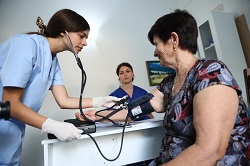
Nurses make about 79% of primary healthcare (PHC) workforce in Albania. Having nurses as full members of the PHC teams is essential to meet the complex health and social needs of the population. Due to the growing needs related to non-communicable diseases (NCDs) and ageing population, there is a clearly articulated demand for specialized family nurses that can offer quality preventive services, better NCDs management, and home-based care.
Transformative changes are occurring in organization and delivery of primary healthcare services and nurses are well positioned to contribute to these reforms if their role and education is boosted accordingly. Therefore, establishing a new educational program in family nursing would enhance training of this professional category, would make nurses more competent to meet the needs of the population and would strengthen their role in the communities.
SDC, through its project Health for All (HAP), has supported the Faculty of Medical Technical Sciences (FMTS) to develop a new professional master program in Family Nursing that will be offered to students this fall. The study program has a competence-based curriculum aiming to prepare qualified family nurses following the WHO definition [1] of the multifaceted role of the Family Health Nurse and the Basic Package of PHC services in Albania. The curriculum has been elaborated in close collaboration with the experts from the Universities of Basel and Leuven and has in focus the professional practice. HAP has invested in establishing a new clinical simulation laboratory that creates a clinical environment necessary for the rehearsal of family nursing practice. Furthermore, the teaching personnel of FMTS has been trained on curriculum design, pedagogical and clinical skills, as well as integration of gender aspects during the implementation of this program.
A specific aspect of the program is the affiliation of selected PHC centers to FMTS to create the necessary environment for the internships and clinical practice of the students. 10 PHC centers in urban Tirana that will be used as clinical practice centers are being supported by HAP to strengthen their technical capacities. The establishment of this professional master program is among the objectives of the national “Strategy on development of PHC services in Albania, 2020-2025”. HAP is therefore committed in supporting health authorities and academic institutions to achieve this objective and more generally in improving the quality of PHC services, with a special focus on family medicine.
More information
www.hap.org.al
ContactBesim Nuri, Sajmira Aderaj, Irma Qehajaj
Health for All Project (Albania)
info@hap.org.al[1] The Family Health Nurse Context, Conceptual Framework and curriculum, WHO 2000 ENhANCE Project (European Curriculum for Family and Community Nurses); https://www.enhance-fcn.eu/
Photo: ©Bevis Fusha/MoHSP
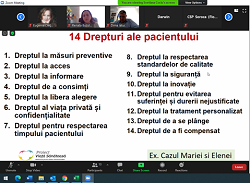
SDCs Healthy Life Project strives for men and women in Moldova to take responsibility for their own health, demand their rights and hold decision-makers accountable for reaching even the most vulnerable NCD patients (outcome 3). To achieve this objective, the project promotes an approach to strengthen patients’ rights from both the perspective of “rights holders” (the patients; community members or the general population as they are users of the health services) and “duty bearers” (the health providers and the local leaders, as they have a duty to be responsive to needs of the population).
This work started with the communication campaign “I am a PATIENT, I know my RIGHTS!” which took place between 5 and 9 May 2021, during the 15th edition of the European Patients' Rights Day. The campaign included a series of awareness-raising activities in which health facilities, the health departments of the municipalities and the educational institutions in the medical field, as well as active patient associations participated.
In anticipation of further capacity building of community members in this area, a rapid survey was conducted at the community level on local understanding of rights to health and how it relates to personal experience of using the health system. Based on the survey results, content was developed to raise awareness on patients’ rights.
Between July and August 2021, 20 informational sessions on the rights to health were conducted at the community level with the participation of 458 representatives of civil society from the 20 target rural communities. Participants were informed about the rights to health in the context of the Moldovan health system, the rights and responsibilities of the patient; recourse and complaint mechanisms in the case of rights violation; as well as broader discussions on individual and social responsibility for health.
During these community dialogues, the most frequent issues that surfaced related to access to quality medical services, lack of understanding of compulsory medical insurance, the attitude of healthcare workers, and the practice of informal payments for health care services. Elderly patients, and those with chronic diseases, expressed higher levels of dissatisfaction with the health system.
The rural population in Moldova often face compounded vulnerabilities and higher levels of exclusion, including lower access to health services, lower level of health literacy and fewer socio-economic opportunities. Promoting patients’ rights at the community level requires working at the intersection of health literacy and patients’ empowerment to clarify expectations and understanding of what is quality and respectful care. With duty-bearers, human-rights based approaches must be strengthened to ensure that health services are organised and delivered to respond to local needs, including those of the most marginalised.
SDCs Healthy Life Project integrates the work on patients’ rights within larger advocacy and social accountability mechanisms aiming at fostering dialogue between community members and local leaders on what local health priorities are and how to best address them through joint actions for health.
More information:
Contacts:
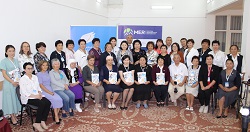 Nurses and midwives represent the largest professional group in the health sector in Kyrgyzstan. They have been playing an increasing role in addressing pressing issues in healthcare and public health, and are making a central contribution to the national health priorities to meet the changing needs of the population. Despite this change, their image and the status of nurses still remain undervalued. The COVID-19 response since 2020, has highlighted the importance of Nurses' role in primary health care. In line with this difficult period, SDC's MER (Medical Education Reforms) Project granted much attention and recognition to these healthcare professionals and created a communication campaign “Say thank you to the nurse" as one of the key messages. It is equally important to ensure that nurses and midwives are a part of the decision-making process and to reach the aim of having the Nursing profession being respected and recognized by all. The Nursing Education Reform has become one of the central components of the MER project and will be further developed and implemented during the Project's Phase III (2021-2024).
Nurses and midwives represent the largest professional group in the health sector in Kyrgyzstan. They have been playing an increasing role in addressing pressing issues in healthcare and public health, and are making a central contribution to the national health priorities to meet the changing needs of the population. Despite this change, their image and the status of nurses still remain undervalued. The COVID-19 response since 2020, has highlighted the importance of Nurses' role in primary health care. In line with this difficult period, SDC's MER (Medical Education Reforms) Project granted much attention and recognition to these healthcare professionals and created a communication campaign “Say thank you to the nurse" as one of the key messages. It is equally important to ensure that nurses and midwives are a part of the decision-making process and to reach the aim of having the Nursing profession being respected and recognized by all. The Nursing Education Reform has become one of the central components of the MER project and will be further developed and implemented during the Project's Phase III (2021-2024).
During the year, several important events related to Nursing education development took place online such as the 5th Congress on Nursing held on August 25, 2021 gathering more than 500 connected and interested participants from all over the country. This high-level event is the conclusion of an intensive year dedicated to the Nurses. The Nursing Professional Association (NPA) organizes such Congress of Nursing and Midwifery Specialists every 3-5 years where educational parties' representatives, medical colleges, continuing nursing education institution and other associations debated and shared their views about promoting the profession.
The MER project strongly believes that strengthening nurses' training and increasing their competencies and responsibilities is critical and needs to be translated into reformed regulations and laws. Videos devoted to the International Year of Nurses were presented during this congress, (https://www.youtube.com/playlist?list=PLxrGf7wRbGjp-5FamlJiouiJku3KDBKJE) along with the approved State Professional Standards and Catalogue of Competencies. To reach international standards and develop State Educational Standards, the Working Group on Nursing Education is working in close collaboration with international experts, especially benefitting from the expertise of Prof. Brigita Skela Savič from the Angela Boškin Faculty of Health Care (Slovenia). This allows developing a well-defined new education pathway for Nurses trained at the Medical Colleges level.
In this 5th Online Congress, one of the highlights was the presentation of the report on nurses in Kyrgyzstan. This is the very first country report highlighting the status of nursing care and education in the Kyrgyz Republic, which has been published and shared with all the related stakeholders ( http://assd.med.kg/struktura-assdkr/the-report-on-the-nursing-care-status-in-the-kyrgyz-republic/; ENG & RUS versions available). This paper analyzes the actual situation of Nursing and Midwifery in Kyrgyzstan and proposes sustainable solutions for further nursing care development and improvement.
This Congress came up with a multilateral and signed resolution, aiming to engage further in the revision of the mechanism of allowances and workload norms, to introduce modern nursing care procedures to the educational process, to strengthen the interaction of educational organizations with clinical sites and to consider the possibility of introducing a unified admission procedure to all medical colleges. Thanks to the dynamic leadership of the nurses' representative at the Ministry of Health and of Social Development (MHSD), SDC financial commitment and with the support from the MER project, the reform is moving promptly ahead.
By Marina Giachino, Bruno Lab, Altynai Mambetova, Gulzat Orozalieva
Contacts
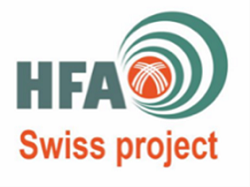
Population health is a priority of the state policy of Kyrgyzstan. The Kyrgyz government has approved the State Health Program 2019-2030, which reflects the main areas of reforms for 12 years, including the creation of a sustainable health management system as one of the key mechanisms to improve the quality of health services.
To support the Government of Kyrgyzstan, at the request of the Ministry of Health and Social Development (MOHSD), in August 2020, the Swiss Agency for Development and Cooperation (SDC) launched the second phase of the Health Facility Autonomy Project (HFA phase II), implemented by the international organization "Euro Health Group" (Denmark) in partnership with the Public Foundation "Health System Initiatives" (Kyrgyzstan). This complex project is adding to the realization of the MOH Vision for the effective management and is supporting the government and the MOHSD KR to enhance the system of continuous knowledge and skills development for health managers and create a conducive regulatory environment for health facilities, so that they could be effectively managed by competent managers.
In 2020, the project provided ample support to the establishment of the Association of Health Managers (AHM) and will continue to support the Association, during the project lifetime, in its role of empowering health managers for playing a greater role in the Kyrgyz health system and in professional development of health managers.
Currently, the project facilitates the development of the competency-based system for selecting, appointing and supporting health managers, together with the core national partners (the MOHSD KR, and the Center for Health System Development and Medical Technologies), including the development of the Catalogue of Competencies for health facility managers and new health management curriculum for health professionals.
In close collaboration with the MOHSD, in the first half of 2020, the project drafted pertinent regulatory acts on: 1) health managers, 2) conditions and procedures for appointing health managers, 3) formation and utilization of the reserve of the managerial cadre and 4) certification of health managers. Further, the project facilitated a series of successful round tables with more than 80 health managers from Batken, Jalal-Abad, Issyk-Kul, Naryn, Osh and Talas regions discussing these drafts of regulatory acts. Discussions of above regulations will continue to ensure that the core stakeholders and the professional community agree with these important advancements towards the strengthening of the managerial cadre of the health system in the country.
The project will continue to take an active role in supporting the development of health management in Kyrgyzstan, having in mind the ultimate goal of these efforts: strengthening the pillar of the Kyrgyzstan health management system so that it can become well-regulated and functional with qualified health managers that perform their tasks effectively.
Contacts:
Population health is a priority of the state policy of Kyrgyzstan. The Kyrgyz government has approved the State Health Program 2019-2030, which reflects the main areas of reforms for 12 years, including the creation of a sustainable health management system as one of the key mechanisms to improve the quality of health services.
To support the Government of Kyrgyzstan, at the request of the Ministry of Health and Social Development (MOHSD), in August 2020, the Swiss Agency for Development and Cooperation (SDC) launched the second phase of the Health Facility Autonomy Project (HFA phase II), implemented by the international organization "Euro Health Group" (Denmark) in partnership with the Public Foundation "Health System Initiatives" (Kyrgyzstan). This complex project is adding to the realization of the MOH Vision for the effective management and is supporting the government and the MOHSD KR to enhance the system of continuous knowledge and skills development for health managers and create a conducive regulatory environment for health facilities, so that they could be effectively managed by competent managers.
In 2020, the project provided ample support to the establishment of the Association of Health Managers (AHM) and will continue to support the Association, during the project lifetime, in its role of empowering health managers for playing a greater role in the Kyrgyz health system and in professional development of health managers.
Currently, the project facilitates the development of the competency-based system for selecting, appointing and supporting health managers, together with the core national partners (the MOHSD KR, and the Center for Health System Development and Medical Technologies), including the development of the Catalogue of Competencies for health facility managers and new health management curriculum for health professionals.
In close collaboration with the MOHSD, in the first half of 2020, the project drafted pertinent regulatory acts on: 1) health managers, 2) conditions and procedures for appointing health managers, 3) formation and utilization of the reserve of the managerial cadre and 4) certification of health managers. Further, the project facilitated a series of successful round tables with more than 80 health managers from Batken, Jalal-Abad, Issyk-Kul, Naryn, Osh and Talas regions discussing these drafts of regulatory acts. Discussions of above regulations will continue to ensure that the core stakeholders and the professional community agree with these important advancements towards the strengthening of the managerial cadre of the health system in the country.
The project will continue to take an active role in supporting the development of health management in Kyrgyzstan, having in mind the ultimate goal of these efforts: strengthening the pillar of the Kyrgyzstan health management system so that it can become well-regulated and functional with qualified health managers that perform their tasks effectively.
Contacts: Dr Sanja Matovic-Miljanovic, PhD.
Regional Manager and Strategic Advisor
Euro Health Group, Denmark/Serbia
smatovic@ehg.dk Dr Chinara Seitalieva
National Team Leader, HFA Phase II project,
chseitalieva@ehg.dk
